Japanese is one of the top ten most spoken languages in the world. Whether you are a tourist, a businessman, or a student, Japanese is an essential skill for many.
Here are some of the best apps to learn Japanese for beginners starting their language-learning journey on their own and for those wanting to sharpen their Japanese skills.
Duolingo Japanese
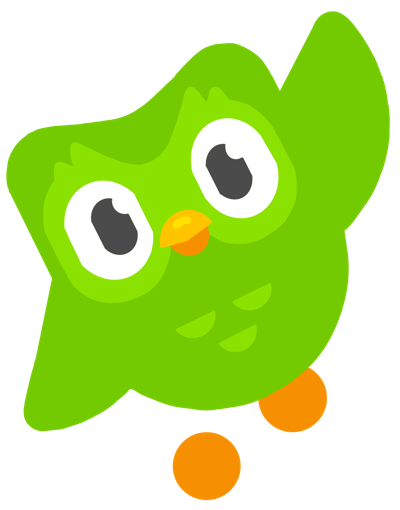
Duolingo is one of this guide’s most popular free language learning apps. It has been in the language teaching market for years, but it wasn’t until a couple of years ago that the Duolingo team launched a Japanese course.
This course is designed to help you learn the basics of the Japanese language through several interactive lessons. Each lesson covers a different topic and introduces relevant Japanese vocabulary.
For those learners that already know some Japanese, you can take a proficiency test to jump ahead to later lessons.
This application offers different language practice exercises, varying from translating vocabulary or phrases from Japanese to English and vice versa, writing or rearranging sentences to filling in the blank activities.
The great thing about Duolingo is that the creators have ensured that with the Japanese course, you can obtain a basic Japanese vocabulary and grammar equivalent to an upper beginner level (JLPT N5).
Pros
- It starts teaching from the building blocks of the Japanese language; Hiragana and Katakana. In the beginning, romaji is mainly used, but as you progress more, Hiragana, Katakana and Kanji are introduced.
- The audio is clear. You can repeat it as often as you want, which makes for excellent shadowing practice.
- Topics introduce vocabulary. When learning a new language, the amount of vocabulary to learn can feel overwhelming. Duolingo teaches words and phrases based on a range of topics.
- Achieving streaks on the Duolingo app is a fun way to stay consistent with your learning. It encourages you to make language learning a daily habit! Setting aside 15 minutes a day for language learning is a much more effective way to study and retain new information.
- You can compete against friends or other learners on the Duolingo leaderboard. The competitive side of me loves this feature!
Cons
- Grammar explanations are lacking. Duolingo relies on an inference to learn grammar (by seeing a sentence pattern repeatedly, you will eventually determine what it means). This method does not work with Japanese grammar since it’s completely different from English. Full explanations are available on the Duolingo website but not on the app where it’s needed most.
- Regarding hiragana, katakana and kanji, the focus is on recognition. On top of that, most of the questions are multiple-choice, so it is easy to think that you have learned all the kana despite knowing it on a surface level.
- The introduction of katakana and kanji feels abrupt with the lack of explanation. This is confusing to learners without any background on how the various Japanese writing systems work.
Download Duolingo on iOS / Android
LingoDeer

Meet Duolingo’s lesser-known cousin, LingoDeer! LingoDeer is one of the newer language learning apps on the market and has taken the Duolingo model and enhanced it for Asian languages, specifically Mandarin, Korean and Japanese.
The interface of this application will feel familiar with Duolingo with its segmented and themed lessons. Like many other language learning apps, LingoDeer gamifies the learning experience.
Users receive experience points upon completing goals and lose turns for wrong answers during test portions. But that is where the similarities end. From there, this app only enhances what its competitors have on offer.
LingoDeer users can practice newly-learned Japanese vocabulary and grammar in a wider variety of exercises, from matching, fill-in-the-blanks, spelling, writing, listening, and speaking to much more.
Japanese grammar is explained far more thoroughly. Tips and notes can be found on the lesson’s plate and brought up in the middle of exercises by simply clicking on the Japanese particles.
This difference alone sets LingoDeer above the rest with almost textbook-like grammar explanations.
But the best feature of this app is its comprehensive lessons covering the 3 Japanese writing systems: Hiragana, katakana, and kanji.
The lessons go in-depth in pronunciation, including word stress, exceptions, and explanations on how to make the sound.
There are even words accompanying the Japanese characters where you can click to hear the pronunciation.
LingoDeer has taken the model of a successful language-learning app and brought it to another level. With its comprehensive content and numerous unique features for Japanese language beginners, this might be one of the best apps available.
Pros
- Clear Audio. Native Japanese speakers record the example sentences!
- It has a great review system. The application offers in-house flashcards to review Japanese vocabulary, grammar, and kanji that you encounter throughout the course. The flashcard system takes inspiration from Anki (one of the best SRS review systems available) in its design.
- Japanese grammar is explained well and in detail. Grammar is not treated as an afterthought. Compared to other competitors, LingoDeer excels at explaining clearly and concisely with many example sentences.
- There are different exercises and stories to practice reading, listening, and pronunciation. Variety is essential when it comes to studying a language!
- It also has a customizable interface. You can magnify or shrink text size, choose your background color, and toggle romanized script on/off.
Cons
- It costs money after the first half of the course. The price ranges from $3.49/mo to $8.99/mo, depending on how long you want to sign up. There is also a lifetime option for $69.99, which gives access to all language courses on the app.
- The order in which the topics are taught doesn’t make sense. For the most part, LingoDeer does an excellent job of teaching useful language and structuring Japanese lessons that build upon each other well. But sometimes, the lessons include language that’s not useful for their level.
- There are a few bugs in the app. While the app works well and looks great since it’s a new app, there are still some tiny kinks in the gameplay, such as lessons loading slowly or hearing random audio during another practice exercise.
Download LingoDeer on iOS / Android
Kanji Study

Learning kanji is one of the most challenging aspects of studying Japanese. Not only are there thousands of characters, but each one often has more than reading, making it an overwhelming process for learners.
The Kanji Study app makes the Japanese alphabet learning process interactive and enjoyable!
Kanji Study breaks down the daunting task of learning over 2000 kanji into manageable chunks. There’s detailed information for each kanji, from its definition, readings, and Japanese vocabulary examples to small animations showing the correct stroke order and much more.
Kanji Study takes a more serious approach to learning through drilling practice exercises for optimal retention. Users can assign a rating to each character based on their knowledge, narrowing down the kanji they need to focus on. But the best feature of this app is the kanji writing exercises.
Japanese language learners can improve their kanji recognition by challenging themselves to recall and draw the characters. With this powerful feature, learners can not only use this app as a study tool for the JLPT (Japanese Language Proficiency Test) but also for the Kanji Kentei Test.
Pros
- Clean Design. This app is packed with valuable content, and its straightforward layout makes it easy to find what you are looking for.
- Customized learning. You can also make custom sets to match your textbooks or focus on the kanji you struggle with the most. You can also test yourself via adaptive quizzes that you can customize to your needs.
- Practice writing kanji. This app takes you beyond the recognition stage of learning, and you can practice the kanji you’ve learned by writing it out.
- Quick kanji lookup. You can search over 6000 kanji in one text field using readings, radicals, stroke counts, levels, and more.
- This is one of the most comprehensive kanji study tools available. Suitable for beginners to advanced learners. Because it is highly customizable to your learning needs, any Japanese learner, no matter their level, can take away something from this app.
Cons
- It is not free. Though the beginner level is free of charge, if you want access to the full content of the app (access to over 6,000 kanji), you’ll have to pay.
Download Kanji Study on iOS / Android
Imiwa?
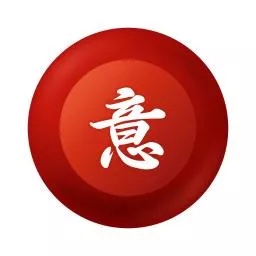
Imiwa has been the best free mobile dictionary app for Japanese learners for the past ten years, and it’s still going strong. If you haven’t been using this dictionary yet, download it immediately!
With over 170,000 Japanese-English entries, a variety of kanji resources, and a Japanese sentence analyzer, Imiwa is packed with valuable content.
You can also search by example sentences. Due to the many unique customs and Japanese culture, the Japanese language often uses concrete terms for specific situations, such as 三日坊主 (みっかぼうず). You are literally saying ‘a 3-day monk,’ but it means an unsteady worker who cannot stick to anything!
Imiwa has an excellent search system; both kanji and Japanese vocabulary can be searched via keyboard input, radicals search, or JLPT levels.
For those more advanced learners studying the JLPT, prepare to rejoice because, in this single app, you have access to all 5 JLPT levels of kanji.
No more hesitation with verbs and their irregular forms, such as 来る and 飲む. There are also Japanese verb and adjective conjugation tables.
Lastly, one of the best features of this app is a powerful tool that will help you with your translation work, the Analyse feature. Copy a Japanese text, open the app, and it will break down all the hiragana, katakana, and kanji into single dictionary entries.
Japanese becomes almost too easy.
Pros
- It’s 100% free. All features are free; there are no in-app purchases and no ads.
- Powerful Search Engine. Users can look up terms in English, Japanese, or romaji.
- Analyzer Feature. Analyze Japanese text and have it broken down into individual dictionary entries.
- Verb and adjective conjugation tables. Never doubt your conjugations again with these handy tables.
- Extensive kanji resources. Organizes kanji by JLPT, Jōyō Kanji list, and SKIP. There are also animations built into the app found in the kanji terms so you can learn the correct kanji stroke order.
- Multilingual support is also available. Definitions are available in English, French, German, Italian, Korean, Russian, and Spanish.
Cons
- Large size. Since the app can be used entirely offline, there’s a large size of 323 MB.
- It’s still only a dictionary. Though this app is handy, it can’t be used as a primary resource for Japanese study as it doesn’t fully cover grammar points.
- Imiwa has been on the market for years, and unfortunately, it doesn’t look like they will be making an Android version that you’ll find on the Play Store anytime soon. Imiwa is one of the few learning Japanese apps that has stayed with me throughout the years I’ve studied Japanese. It’s an oldie, but it’s a goodie! Not available for Android users.
Download on: iOS
gSho
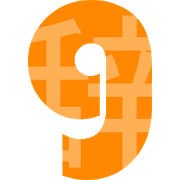
May IOS users have Imiwa? But Android users have the best range of Japanese-English dictionaries to choose from in Google Play, with gSho being one of the most reliable dictionary apps available.
Looking up terms and phrases is simple using gSho, featuring a search-as-you-type function, providing users with lightning-fast results. In just a couple of taps, gSho can provide definitions, conjugations, and examples of sentences.
Example sentences can also be broken down into detailed explanations by tapping on them. The key Japanese words in the sentence are highlighted and can be tapped to bring up information about that particular term instantly.
If this wasn’t enough, each kanji character is also broken down by its radical, difficulty, JLPT level, stroke count, and animated stroke order.
With its robust and fast search engine, gSho is a comprehensive and handy study tool for Japanese learners of all levels.
Pros
- Lightning-fast searches. With its search-as-you-type function, looking up terms take zero time and effort.
- Detailed entries. gSho displays clear explanations for terms and detailed kanji information and verb conjugations. All words have contextualized examples.
- Kanji stroke order diagrams. As well as breaking down the radicals that make up the kanji compounds, difficulty, and JLPT level, the app also displays animated stroke order diagrams for over 6,600 kanji!
- Kana Tables. This app includes comprehensive hiragana and katakana tables, which are great for Japanese beginners. With a tap, you can switch between either for a quick reminder on the difference between ソ and ン or whether you’re reading ぬ or ね.
- It is optimized for all devices. Tablets like the Nexus 7 and up will take advantage of the additional screen space with a two-column layout that doubles the number of visible search results.
Cons
- Advertisements in the app. You can upgrade to the No Ads version for $2.99 and never see an in-app ad again.
- Large size. Since the app can be used entirely offline, there’s a large size, 3.1 M.
Download on: Android
Hello Talk

This is where it all comes together. HelloTalk is a language exchange app that allows you to take everything you have studied and apply it to a real conversation with native Japanese speakers.
These native speakers will help correct and provide real-time feedback via text, voice, or video conversations.
HelloTalk has a very supportive community. You start by writing a summary about yourself on your profile, choose your native language, and select the language and level you’re currently learning.
After that, you can search for native language partners worldwide!
You can talk about the latest Makoto Shinkai film with other Japanese speakers, who will make sure to edit your messages and correct your Japanese grammar.
Another feature of this app is the ability to transcribe a voice message so that you can also practice speech and comprehension!
This app is highly recommended for intermediate to advanced learners that want to meet and have genuine interactions with native Japanese speakers to become better and more confident at speaking Japanese.
Pros
- The community is vast, meaning you’ll never have a problem finding someone to chat with.
- The interface is very intuitive. Despite being feature-rich, the app is straightforward to use. It provides a tutorial that you can revisit at any time. It has a very clean, uncluttered design.
- The app is free to use. It’s free. There are some in-app purchases, but the app is beneficial without them.
- It’s like having a Japanese teacher in your pocket. You can receive advice on your Japanese pronunciation and have a native correct your grammar!
Cons
- The number of messages can get overwhelming. Because it is such an active community, you may find yourself getting 20+ messages an hour when you are online.
- Using the condensed keyboard when writing long messages can be painful for some. The keyboard can’t be used in the landscape. The app doesn’t let you rotate to the landscape; instead, you’re stuck with portrait.
- Leaving the app running in the background does have a massive drain on the battery.
Tsurukame for WaniKani

If you’re serious about learning Japanese, thoroughly learning kanji is one of the most valuable steps you can take toward fluency. Long-time learners of Japanese will know about Wanikani but may not be aware of the app Tsurukame.
Created by a long-time Wanikani user, Tsurukame is not the official Wanikani app, but it should be! With its simple and effective layout and user-friendly features, now it’s easier than ever to review kanji and Japanese vocabulary!
The app syncs up to your Wanikani account, and you can burn through your reviews and Japanese lessons in no time!
A subscription to Wanikani will set you back $9/month or $89/year (keep in mind that there’s an annual sale at the end of the year for lifetime access), but it will surprise you by the number of kanji you can learn over just a couple of weeks.
Based on a spaced repetition reviewing system, learners are motivated to depend on memory recall to ascend through the various levels.
As well as this, memorizing tricky characters is made a breeze by using mnemonics, making WaniKani an active learning process.
Offline reviews sync up when connected online. This is a fun, interactive, on-the-go review language learning app.
Pros
- Native speaker’s pronunciation. A native speaker has recorded vocabulary words and kanji, and there is the option to have them pronounced when reviewing them. The audio helps memorize the correct pronunciation.
- You can do reviews and lessons offline. Your progress will be synced when you’re online again.
- Easy to use interface. Much like the original Wanikani website, the app is user-friendly and colorful.
- See your progress with charts. The app displays a pie chart graph showing your progress on current-level radicals, kanji, and vocabulary.
- No more typos. You can turn on a feature on the app to ignore typos and synonyms during reviews.
Cons
- You need to have an account with Wanikani to use this app. The Tsurukame app is 100% free, but a Wanikani subscription will pay you back $9 monthly. However, you’ll be way ahead in the kanji game within a few weeks. You can go up to level 5 on the free version of Wanikani.
- You can’t begin on your desired level. This can be the most frustrating for intermediate to advanced learners of Wanikani and Tsurukame. Fingers crossed that the team at Wanikani deals with this issue soon!
- It’s not the official Wanikani app. This app was developed by a third party, a long-time user of Wanikani.
- Not available for Android users.
Download on iOS
Daily NHK Japanese News Reader
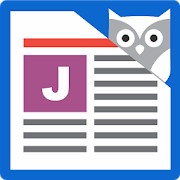
NHK (日本放送協会 Nippon Housou Kyoukai) is the national public broadcasting network in Japan and a leading news outlet.
They publish articles daily in Japanese on domestic and international issues. NHK Japanese is an excellent app for intermediate learners that seek to apply their knowledge to real-world situations.
Being able to read a Japanese newspaper is a goal many serious learners aim for as it’s one of the most challenging aspects of the language to learn.
However, NHK has done a fantastic job of simplifying articles to one or two paragraphs, allowing language learners to enjoy the latest news in Japan.
There’s the option to read the articles with furigana, or those that want to challenge their reading skills can turn off this feature.
More complex Japanese vocabulary is marked in green and underlined; if you click on this, the meaning is explained in Japanese (great for comprehension practice).
The names of cities, people, and institutions are also marked in pink so that you’re not constantly looking up terms in the dictionary.
To take advantage of this app, learners must have an excellent Japanese language base to read and understand the news.
Pros
- Short and simple Japanese news. Current affairs articles are short and straightforward, ideal for light and quick reading practice.
- Furigana Feature. There is the option to read the articles with furigana or without furigana.
- Vocabulary is marked. Each news article’s complex vocabulary is marked with an explanation of its meaning in Japanese.
- Integrated translator included. This is handy for searching for the meaning of specific Japanese words.
- Audio and video content are also available. Each news includes the audio of the text and a small related video, which is ideal for practicing our listening comprehension.
Cons
- Users must have a solid Japanese language foundation to make the most of this app. This app is not for beginners. It is recommended for intermediate to advanced learners, especially those studying at a language school.
- Limited content is available daily. One to three news articles are published daily, so the amount of new content is limited.
- Not available for IOS users.
Download on Android
So, what is the best Japanese learning app?
Learning Japanese is a marathon, not a sprint, especially if you are learning on your own. There isn’t a single app out there that can overnight make you a better speaker of Japanese.
It’s about your effort, but fluency is within reach by using various Japanese learning apps!
Common Questions About Mobile Apps to Learn Japanese:
Duolingo is a great mobile app for learning Japanese, though, DuoLingo is really about vocabulary, so you would probably need other resources to learn grammar.
Yes, this is possible. Japanese language learners can find roughly everything you can find on the internet or in books on apps; it all depends on how you use them.
Duolingo might be a good one to start. It would be best if you read our guide to compare all the Japanese learning apps we reviewed so you can pick the right one.


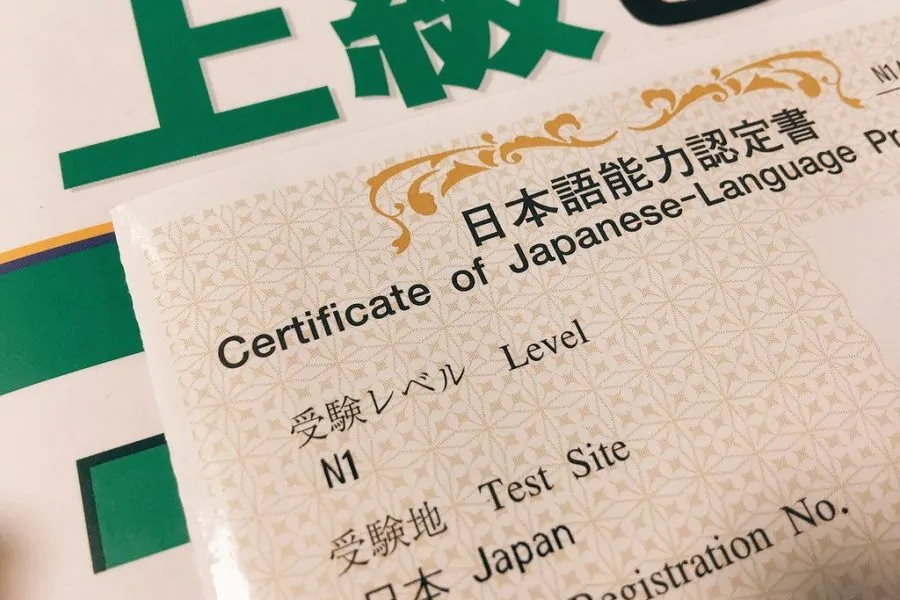


Like Tsurukame for iOS, Flaming Durtles is the Android app for accessing your Wanikani lessons/reviews, and I’d highly recommend it.